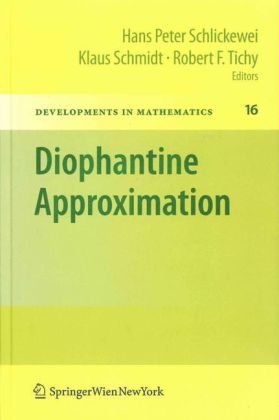- 2 402 202 книги
- Поиск
libcats.org













The Curve of the Sacred: An Exploration of Human Spirituality
Constantin V. Ponomareff; Kenneth A. BrysonThis interdisciplinary book examines the nature of spirituality and the role it plays in the search for meaning. Spirituality is a loving tendency towards the sacred. In a secular environment, the sacred is taken to be a power greater than self. In a religious environment, the Sacred refers to God, or Higher Power. The book examines the developments of the s/Sacred in great works of art and literature, as well as in medicine, theology, psychology, philosophy, and religion. Spirituality also functions as an unloving tendency towards disunity, or a force for evil. The first part of the book examines the ways of the spiritual as a force for good and evil. We have just witnessed one of the bloodiest centuries in human history. The experience of two World Wars leaves a legacy of brokenness: “Where Nossack’s reminiscences bore poetic, compassionate, and personal witness to the disaster, Eliot’s poetry reads more like a sacred and religious poem taking contemporary Western European civilization to task—much like the biblical prophets of old—for its spiritual bankruptcy.” Albert Einstein, Edvard Munch’s Madonna, and Carl Jung’s ‘unconscious’ touch the curve of the Sacred in more promising places. The second part examines how the search for meaning works. The distinction between being human and being a person plays a central role in the life of the spiritual; “…the spiritual is manifest in the activities taking place in the central self. The central self is the locus of all thoughts, feelings, acts of reason and judgment, conscious and unconscious processes alike. The central self is the place where social relationships and environmental relationships are processed. The essential feature of the central self is that it does not exist outside these processes.” The same spiritual energies that light up great works of art also light up our destructive side, only the associations’ change. Contents Editorial Foreword by Kenneth A. BRYSON Foreword by Rose Tekel Acknowledgments Introduction by Kenneth A. BRYSON Part One Constantin V. PONOMAREFF: Spirituality from the Perspective of the Humanities Tradition One: The Sacred and Evil Two: Healers and Would-Be Healers Three: The Koran’s Compassionate Spirit Four: Transformations of the Sacred in Russian Society Five: Mussorgsky’s Night on Bald Mountain Six: T.S. Eliot’s “The Wasteland” Seven: G?nter Grass’s The Tin Drum: The Sacred in Destructive Guise Eight: A Meditation on Albert Camus Nine: The Sacred as Subatomic Particle, Image, Subliminal Intelligence or Metaphor Ten: Albert Einstein Eleven: Edvard Munch’s Madonna Twelve: Jung’s Unconscious Thirteen: The Sacred and Time Part Two Kenneth A. BRYSON: Becoming Personal from the Spiritual Fourteen: The Nature of Spirituality Fifteen: Acting towards the Divine Image Sixteen: The Spiritual Nature of Dependency Seventeen: Recovery as Process Eighteen: Spirituality and Human Death Nineteen: Spirituality and Religion Notes Bibliography About the Authors Index
Скачать книгу бесплатно (pdf, 1.13 Mb)
Читать «The Curve of the Sacred: An Exploration of Human Spirituality »
Читать «The Curve of the Sacred: An Exploration of Human Spirituality »
EPUB | FB2 | MOBI | TXT | RTF
* Конвертация файла может нарушить форматирование оригинала. По-возможности скачивайте файл в оригинальном формате.
Популярные книги за неделю:

Проектирование и строительство. Дом, квартира, сад
Автор: Петер Нойферт, Автор: Людвиг Нефф
Размер книги: 20.83 Mb

Система упражнений по развитию способностей человека (Практическое пособие)
Автор: Петров Аркадий НаумовичКатегория: Путь к себе
Размер книги: 818 Kb

Сотворение мира (3-х томник)
Автор: Петров Аркадий НаумовичКатегория: Путь к себе
Размер книги: 817 Kb

Радиолюбительские схемы на ИС типа 555
Автор: Трейстер Р.Категория: Электротехника и связь
Размер книги: 13.64 Mb

Момент истины (В августе сорок четвертого...)
Автор: Богомолов Владимир ОсиповичКатегория: О войне
Размер книги: 1.83 Mb
Только что пользователи скачали эти книги:

Проектирование и строительство. Дом, квартира, сад
Автор: Петер Нойферт, Автор: Людвиг Нефф
Размер книги: 20.83 Mb

Система упражнений по развитию способностей человека (Практическое пособие)
Автор: Петров Аркадий НаумовичКатегория: Путь к себе
Размер книги: 818 Kb

Сотворение мира (3-х томник)
Автор: Петров Аркадий НаумовичКатегория: Путь к себе
Размер книги: 817 Kb

Радиолюбительские схемы на ИС типа 555
Автор: Трейстер Р.Категория: Электротехника и связь
Размер книги: 13.64 Mb

Момент истины (В августе сорок четвертого...)
Автор: Богомолов Владимир ОсиповичКатегория: О войне
Размер книги: 1.83 Mb

Любовные хроники: Флинт Маккензи
Автор: Ли ЭйнаКатегория: Исторические любовные романы
Размер книги: 1.03 Mb

КАК НАПИСАТЬ КАНДИДАТСКУЮ ДИССЕРТАЦИЮ или Курс молодого бойца Пособие
Автор: КОРНЯКОВ М.В., Автор: МАХНО Д.Е.
Размер книги: 6.06 Mb

Diophantine Approximation: Festschrift for Wolfgang Schmidt (Developments in Mathematics) (English and French Edition)
Автор: Robert F. Tichy, Автор: Hans Peter Schlickewei, Автор: Klaus D. Schmidt
Размер книги: 2.32 Mb








